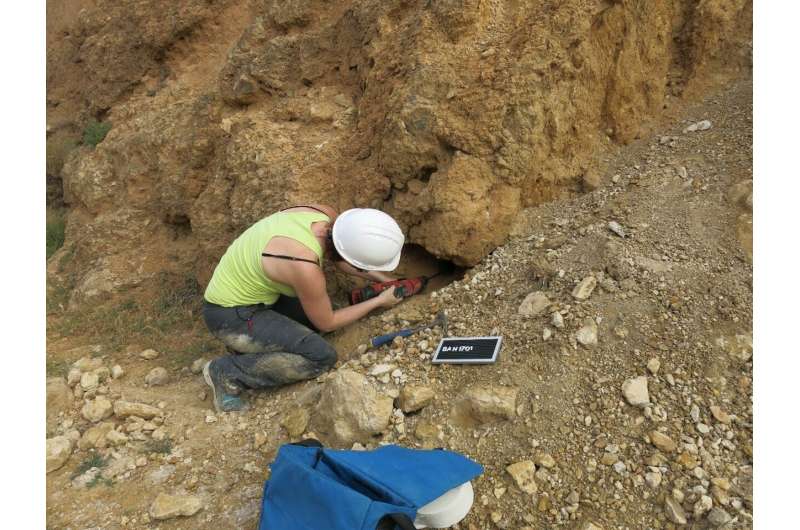New datings call into question the seismic hazards posed by faults in the Iberian Chain in Aragón

Researcher Davinia Moreno, a geochronologist at the Centro Nacional de Investigación sobre la Evolución Humana (CENIEH), is the lead author of a study published recently in the journal Quaternary Geochronology, which combined four independent dating methods to pin down the ages of deposits associated to certain faults in the Iberian Chain, in the provinces of Zaragoza and Teruel (Aragón, Spain), and shows that they are less active than was believed.
Geochronology is an essential tool in tectonic geomorphology and paleoseismicity studies directed at characterizing active faults and assessing the danger they pose. The number and quality of the available datings determines how reliable seismic hazard assessments are, and therefore has important socio-economic implications.
This work questions the reliability of the ages previously published for the Teruel, Concud, Daroca and Munébrega Faults, principally due to the lack of information about the methodology applied, and highlights the risk of using inaccurate dates in seismic hazard studies.
"Knowing how old the deposits associated to a fault are is indispensable to determining how fast it is movingand how often it generates earthquakes, which has important socio-economic implications, like the interruption and redesign of major infrastructures," says Moreno.
Four dating methods
Traditionally, characterization of the Quaternary faults in the central section of the Iberian chain (slip rate, paleoearthquake timing, recurrence) has been founded on ages provided by the Dating and Radiochemistry Laboratory at the Universidad Autónoma de Madrid (UAM Lab), which is now closed.
The purpose of the present work was to assess the validity of these ages, which were obtained in the 1990s and the start of the 2000s, by applying four dating methods: Electron Spin Resonance (ESR), Optically Stimulated Luminescence (OSL), Uranium-Thorium Series (U/Th) and Radiocarbon (14C). In many of the cases, the samples that had been analyzed by the UAM Lab were replicated.
The new geochronological data, the inconsistency of the ages provided by the UAM Lab such as, for example, anomalous incision rates, fault slip rates and recurrence values, combined with the limited information available on the methodology applied by that laboratory, raise questions about the reliability of the existing ages, leading to significant overestimates of the hazard posed by the faults. "They also bring into focus the need to review the geomorphological and Quaternary studies that have been based on unreliable ages," adds Moreno.
Teamwork
The cornerstone of this study is its combination of the most advanced protocols for four dating methods and close collaboration with geologists specializing in geomorphology and paleoseismology. This was made possible by the joint work of researchers and technicians from the different Geochronology laboratories at the CENIEH, namely: María Jesús Alonso, Oswaldo Guzmán and Davinia Moreno at the ESR Laboratory; Miren del Val, Gloria I. López and David Martínez of the OSL Laboratory; and Fernando Jiménez and Virginia Martínez-Pillado from the U/Th Laboratory.
In addition, the exhaustive geological, geomorphological and paleoseismological work conducted by Francisco Gutiérrez, professor at the Department of Earth Sciences at the Universidad de Zaragoza, and Domingo Carbonel, a postdoctoral researcher in the same department, was indispensable to contextualizing and interpreting the geochronological data.
More information: Davinia Moreno et al. A multi-method dating approach to reassess the geochronology of faulted Quaternary deposits in the central sector of the Iberian Chain (NE Spain), Quaternary Geochronology (2021). DOI: 10.1016/j.quageo.2021.101185
Provided by CENIEH

















